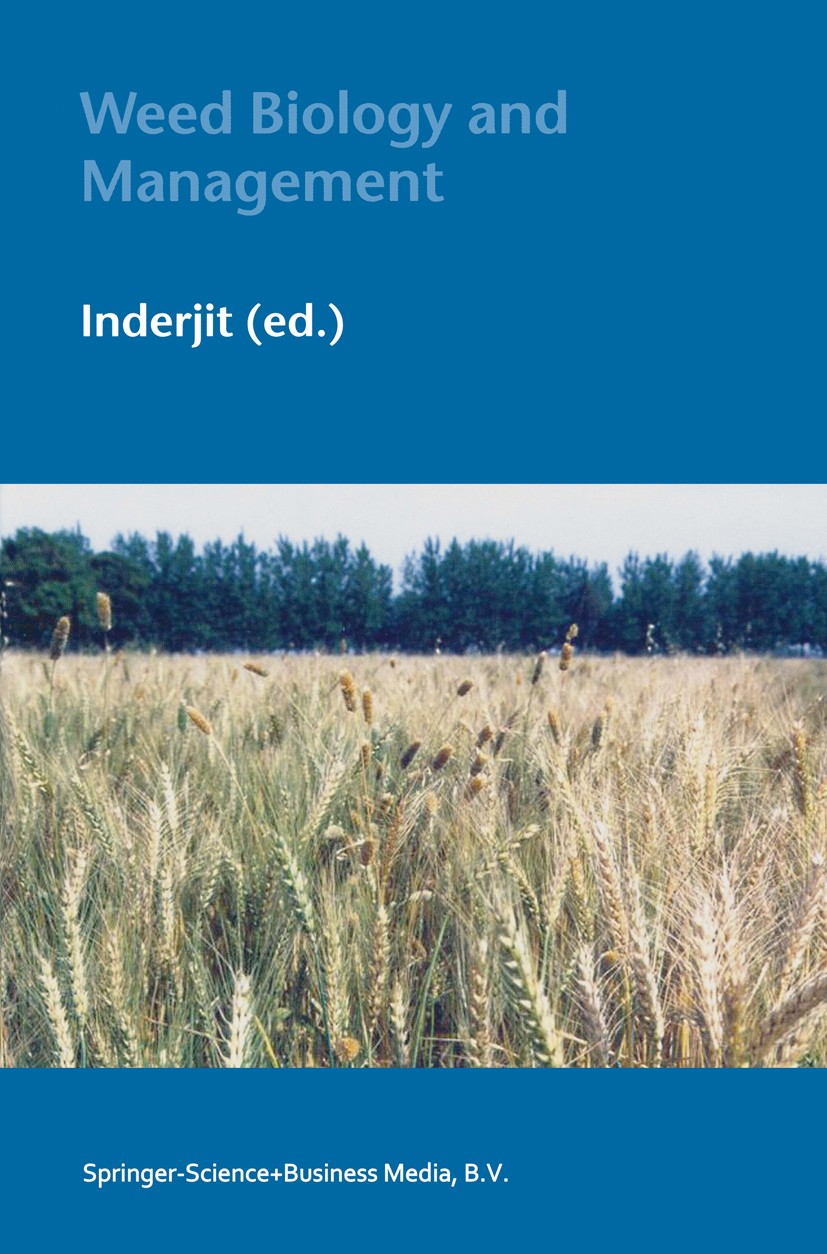| 书目名称 | Weed Biology and Management | | 编辑 | Inderjit | | 视频video | http://file.papertrans.cn/1022/1021826/1021826.mp4 | | 图书封面 |  | | 描述 | Weeds hold an enigmatic and sometimes-controversial place in agriculture, where they are generally reviled, grudgingly tolerated, and occasionally admired. In most cases, growers make considerable effort to reduce the negative economic impact of weeds because they compete with crops for resources and hinder field operations, thereby affecting crop productivity and quality, and ultimately the sustainability of agriculture. Weed control in production agriculture is commonly achieved through the integration of chemical, biological, and mechanical management methods. Chemicals (herbicides) usually inhibit the growth and establishment of weed plants by interfering with various physiological and biochemical pathways. Biological methods include crop competition, smother crops, rotation crops, and allelopathy, as well as specific insect predators and plant pathogens. Mechanical methods encompass an array of tools from short handled hoes to sophisticated video-guided robotic machines. Integrating these technologies, in order to relieve the negative impacts of weeds on crop production in a way that allows growers to optimize profits and preserve human health and the environment, is the scien | | 出版日期 | Book 2004 | | 关键词 | Allelopathy; Ecology; Pathogen; environment; evolution; molecular aspects; physiology; plant pathogens; qual | | 版次 | 1 | | doi | https://doi.org/10.1007/978-94-017-0552-3 | | isbn_softcover | 978-90-481-6493-6 | | isbn_ebook | 978-94-017-0552-3 | | copyright | Springer Science+Business Media Dordrecht 2004 |
The information of publication is updating

|
|
 |Archiver|手机版|小黑屋|
派博传思国际
( 京公网安备110108008328)
GMT+8, 2025-11-7 00:29
|Archiver|手机版|小黑屋|
派博传思国际
( 京公网安备110108008328)
GMT+8, 2025-11-7 00:29


